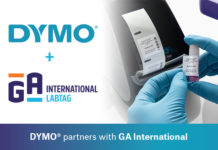
Scientific reproducibility continues to be a pressing issue facing scientific research. Despite efforts like the Reproducibility Project: Cancer Biology it remains an issue, so much so that a sample of four groups being able to replicate each other’s work recently made headlines in Nature. Below are several practical tactics that can be integrated into the lab to improve long-term reproducibility, helping enhance the validity of results and ensure consistency and accuracy for all experimental analyses and conclusions.
Digitize your lab
Consistency and accuracy are the primary keys to maintaining experimental reproducibility. In many labs, particularly those within academia, SOPs, experimental data, and notes are handwritten throughout lab books. Unfortunately, the scope of experimental procedures often outweighs the ability of personnel to accurately and consistently record each and every particularity of a given workflow or experiment by hand without making simple errors or providing a document that can be easily read by others.
Digitization of laboratory procedures via laboratory information management systems (LIMS) and electronic lab notebooks (ELNS) have recently become popular among labs worldwide. Lab books, in addition to sample and inventory tracking, are rendered digitally within systems designed to better manage data flow from the beginning of a workflow through to analysis. This is often performed using a cloud-based service, which allows remote access to view the location and contents of containers, workflows as they occur, data analyses, SOPs, service contracts, and equipment status. This takes the managerial tasks normally accounted for by lab personnel and provides a consistent platform for all to use in a similar fashion.
Minimize human error by optimizing samples and inventory tracking
A significant part of laboratory digitization is sample and inventory tracking. Often, mistakes are made during sample preparation and processing due to labeling errors. It is therefore essential to not only use an identification system comprising either barcode and/or RFID labels; it is also necessary to optimize the system to avoid errors as often as possible.
When integrating labels into your workflow, three factors should be considered:
- Am I using the correct label?
Labels should always be selected based on the conditions they will encounter throughout the protocol. There are a variety of labels for many different purposes, but the most common groups used throughout the lab include cryogenic labels, chemical-resistant labels, and heat-resistant/autoclave labels.
- Am I using the right printer?
Not all printers are created equal. Typically, for protocols that utilize extreme temperatures or chemical exposure, it is recommended to use a thermal-transfer printer versus direct thermal or digital printers, such as laser or inkjet. Thermal-transfer printers provide optimal resistance against these conditions, as well as smudging, fading, and abrasion.
- Does the labeling workflow as a whole match the protocol?
Testing is necessary for any system, whether it’s a LIMS, a new flow cytometer, or new labels. Verifying that the labels, printouts, and scanners work as intended throughout your protocols is essential to ensure consistency. Often, troubleshooting may be necessary to optimize the workflow and fix any outstanding issues.
Automate
Automation, while not always feasible, should be implemented wherever possible. This is because automated processes provide an optimal level of standardization unmatched by human handling. Automation can take several forms in the lab, including automated liquid handlers for handling vials and plates, automated barcode scanners, as well as stainers and slide processors in histology labs. Similar to experimental methods, data capture can also be automated with a LIMS. This ensures that results are transferred and analyzed the instant data is generated, bypassing potential errors.
Train all personnel
One frequently encountered obstacle that results in poor reproducibility is the loss of information when personnel come and go. Salient details of SOPs and workflows are often lost in translation, as paper lab books are hard to decipher, and hands-on training from one scientist to the next is absent. Not only are experimental SOPs improperly conducted, but sample identification protocols are mishandled as well. It’s therefore imperative to integrate training into the daily workflows of all staff, especially when implementing a new system. That way, protocols are kept standardized, not just for the short term but the long term as well.
LabTAG by GA International is a leading manufacturer of high-performance specialty labels and a supplier of identification solutions used in research and medical labs as well as healthcare institutions.


